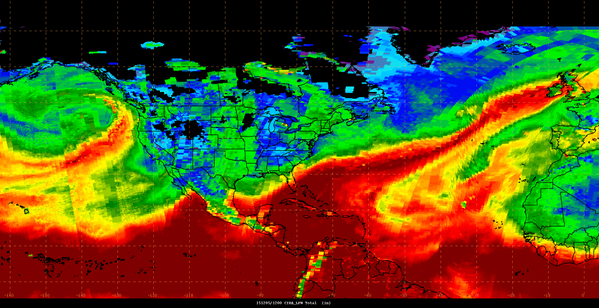Northwest UK Floods December 4-6, 2015
Status: Closed
| Type of posting | Posting date(EST): | Summary | Downloads |
|---|---|---|---|
| First Posting | 12/8/2015 11:30:00 AM |
|
First Posting | Summary
Posting Date: December 8, 2015, 11:30:00 AM
Storm Desmond, the fourth named storm of the season, struck on Friday, December 4. The storm prompted the UK Met Office to issue the first red severe weather warning for rain and amber for wind since February 12, 2014, for parts of northern England and southern Scotland.
Storm Desmond was first identified on December 3, 2015, with a low pressure center south of Newfoundland, Canada. The storm traveled east and grew into a clear closed storm by 6:00 GMT on Friday, December 4. At the same time there was another storm, Philipp, visible to the north of Desmond. By Saturday, December 5, these two storms merged into one fully developed system impacting southern Iceland and bringing heavy rains and winds to Northern Ireland, northern England and Wales, and southern Scotland, as well as to Germany (Ted), Denmark (Helga), Sweden, and Norway (Synne) during December 4 and 5. Desmond then moved further into the Norwegian Sea and dissipated over Norway late on Sunday, December 6.
Figure 1 clearly shows Desmond tapped into nearly stationary tropical moisture, creating a phenomenon called an “atmospheric river” on December 5, spanning more than 5,300 miles from the western Caribbean Sea to southern Sweden. Desmond has wreaked havoc particularly in northwest England, with a highest sustained wind speed of 70 mph (110 km/h); the highest wind gust of 112 mph (180 km/h) was recorded at Aonach Mor, in the Scottish Highlands. A new 24-hour record for rainfall was set in the UK on December 5 at 6:30 p.m. local time after 341 mm fell in Honister, Cumbria, in northwest England—25 mm more than the previous record set on November 19, 2009, at Seathwaite.
Reported Impacts
Rainfall amounts were heavy across the UK where more than 3,500 properties were reported to have been flooded, mainly in northwest England’s Cumbria. Some 42,000 properties remain without power across Lancashire, Morecambe, and Carnforth; more than 2,500 homes are without power in Cumbria.
Bridges have been washed away in Braithwaite, Keswick, and the Eden District. Another 14 were damaged and will not open until after they have been inspected. Many schools were closed on December 7 in the county of Cumbria and, due to loss of power, Lancaster University canceled classes for the rest of the term.
Across the UK, many public events have been canceled, including those celebrating Christmas. Football matches have also been canceled, and Carlisle’s stadium for the United Football Club is submerged. Flights were canceled at both Belfast City and Dublin airports. At least a thousand people were evacuated in Cumbria, and 150 people were rescued from a caravan (mobile home) park in Cumbria. Three deaths have been attributed to Desmond: two in England and one in Northern Ireland.
There are still 16 severe flood warnings, 55 flood warnings, and 27 flood alerts in place for England and Wales.

Figure 1. CIRA layered precipitable water shows the Atmospheric River from the Caribbean to UK, December 5, 2015. (Source NWS OPC)
Flood Defense Failure
The UK’s current flood defense budget is lower than what was spent in 2009-2010 and GBP 115 million lower than last year’s budget. Flood defense expenditure is a contentious issue in the UK. Ironically, Cumbria has benefited from significant investment in innovative flood defense systems in the past few years after devastating floods in January 2005 and in November 2009, but in the case of Cockermouth, Keswick, and Carlisle at least, relatively new flood defenses were overtopped on Saturday.
A flood defense that uses self-raising gates—a first for the UK—was installed in Cockermouth in 2013. This defense was designed to protect against a 100-year return period flood. The self-closing gates use the floodwater’s power to raise the barriers and hold them in place. Keswick received flood defense in the form of walls, embankments, and flood gates in 2012. Keswick had an innovative flood defense of glass panels which added 2.5 meters in height to a wall that followed the river Greta. This flood defense was also designed to withstand a 100-year return period flood. Glass was used instead of concrete to preserve the view. Carlisle’s flood defense scheme was completed in 2010 and included miles of raised defense, pumping stations, and raised footbridges. More than 2,000 properties in Carlisle were flooded in this latest event, nearly two thirds of all properties flooded. According to Environment Secretary Elizabeth Truss, flood defenses protected 11,500 homes.